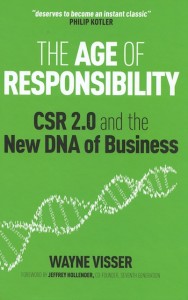CSR and Pharmaceuticals:
Big Pharma on Trial – Part 2
Blog by Wayne Visser
It is nearly ten years later and the pharmaceutical companies are still trying to rebuild their reputations. As Mail & Guardian journalist Qudsiya Karrim reported for Inside Story in 2010: The past decade has been a public relations nightmare for big pharmaceutical companies – and deservedly so, their critics say. Activists and nongovernment organizations the world over have slated Big Pharma for putting profits ahead of people and vigorously enforcing their intellectual property rights, preventing many from gaining access to life-saving medication. It’s an ugly story told repeatedly – in the media, over dinner, at AIDS conferences and during university seminars – and it has earned the pharmaceutical industry an unmatched notoriety.
But have they learned their lesson? The latest and possibly most responsive action has been from GlaxoSmithKline (GSK). Early in 2009, CEO Andrew Witty announced a major reform in their corporate policy on drug affordability and accessibility. In particular, he said GSK will cut its prices for all drugs in the 50 least developed countries to no more than 25% of the levels in the UK and US – and less if possible – and make drugs more affordable in middle-income countries such as Brazil and India. In addition, GSK will reinvest 20% of any profits it makes in the least developed countries in hospitals, clinics and staff and invite scientists from other companies, NGOs or governments to join the hunt for tropical disease treatments at its dedicated institute at Tres Cantos, Spain.
Many NGOs remain sceptical. Michelle Childs, director of policy and advocacy for Medecins Sans Frontieres, says that in China, GSK charges over $3,000 for the antiretroviral Lamivudine in the absence of generic competition, while in Thailand, by comparison, another pharmaceutical company, Abbott, offers the Lopinavir/Ritonavir co-formulation for $500. And as for reinvesting profits, Catherine Tomlinson of the Treatment Action Campaign says, ‘Wouldn’t it simply be better to slash profits and allow for countries themselves to invest in improving health infrastructure? The GSK argument is circular: We charge so much money so that we can give you some of your own money back!’
The most interesting and radical move, however, is that Witty committed GSK to put any chemicals or processes over which it has intellectual property rights that are relevant to finding drugs for neglected diseases into a ‘patent pool’, so they can be explored by other researchers. Explaining this move, Witty said, ‘I think it’s the first time anybody’s really come out and said we’re prepared to start talking to people about pooling our patents to try to facilitate innovation in areas where, so far, there hasn’t been much progress.’ He went on to say …
Continue reading
[button size=”small” color=”blue” style=”download” new_window=”false” link=”http://www.waynevisser.com/wp-content/uploads/2012/08/blog_pharma2_wvisser.pdf”]Pdf[/button] CSR & Pharmaceuticals – Part 2 (blog)
Related websites
[button size=”small” color=”blue” style=”tick” new_window=”false” link=”http://www.waynevisser.com/books/the-age-of-responsibility”]Link[/button] The Age of Responsibility (book)
[button size=”small” color=”blue” style=”tick” new_window=”false” link=”http://www.csrinternational.org”]Link[/button] CSR International (website)
Cite this blog
Visser, W. (2011) CSR & Pharmaceuticals: Big Pharma on Trial – Part 2, Wayne Visser Blog Briefing, 8 June 2011.




 If we expect the right to fair treatment, we have a responsibility to respect the rule of law and honour the principle of reciprocity. If we believe in the right to have our basic needs met, we have the responsibility to respond when poverty denies those rights to others.
If we expect the right to fair treatment, we have a responsibility to respect the rule of law and honour the principle of reciprocity. If we believe in the right to have our basic needs met, we have the responsibility to respond when poverty denies those rights to others.